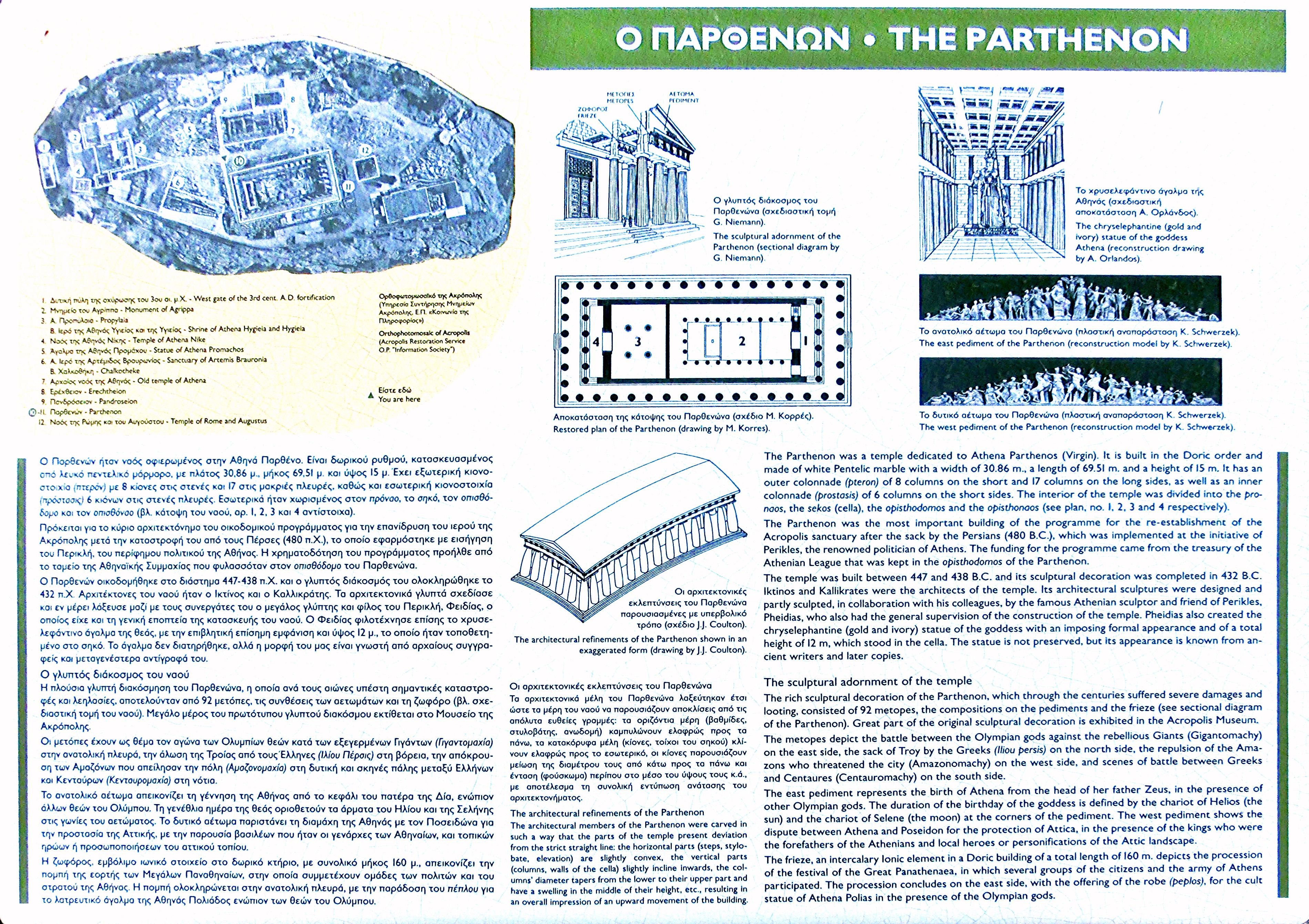|
パルテノンの建築家の優美さ |
The architectural refinements of the Parthenon
The architectural members of the Parthenon were carved in such a way that the parts of the temple present deviation from the strict straight line; the horizontal parts (steps, stylobate, elevation) are slightly convex, the vertical parts (columns, walls of the cella) slightly incline inwards, the columns diameter tapers from the lower to their upper part and have a swelling in the middle of their height, etc., resulting in an overall impression of an upward movement of the building.
The Parthenon was a temple dedicated to Athena Parthenos (Virgin). It is built in the Doric order and made of white Pentelic marble with a width of 30.86 m., a length of 69.51 m. and a height of 15 m. It has an outer colonnad (pteron) of 8 columns on the short and 17 columns on the long sides as well as an inner colonnade (prostasis) of 6 columns on the short sides. The interior of the temple was divided into the pronaos, the sekos (cella), the opisthodomos and the opisthonaos (see Plan. no 1,2,3 and 4 respectively).
The Parthenon was the most important building of the Programme for the re-establishment of the Acropolis sanctuary after the sack by the Persians (480 B.C.), which was implemented at the initiative of Perikles, the renowned politician of Athens. The funding for the programme came from the treasury of the Athenian League that was kept in the opisthodomos of the Parthenon.
The temple was built between 447 and 438 B.C. and its sculptural decoration was completed in 432 B.C. Iktinos and Kallikrates were the architects of the temple. lts architectural sculptures were designed and partly sculpted, in collaboration with his colleagues, by the famous Athenian sculptor and friend of Perikles, Pheidias, who also had the general supervision of the construction of the temple. Pheidias also created the chryselephantine (gold and ivory) statue of the goddess with an imposing formal appearance and of a total height of 12 m, which stood in the cella. The statue is not preserved but its appearance is known from ancient writers and later copies.
The sculptural adornment of the temple.
The rich sculptural decoration of the Parthenon which through the centuries suffered severe damages and looting, consisted of 92 metopes, the compositions on the pediments and the frieze (see sectional diagram of the Parthenon). Great part of the original sculptural decoration is exhibited in the Acropolis Museum. The metopes depict the battle between the Olympian gods against the rebellious Giants (Gigantomachy) on the east side, the sack of Troy by the Greeks (Ilou persis) on the north side the repulsion of the Amazons who threatened the city (Amazonomachy) on the west side, and scenes of battle between Greeks and Centaures (Centauromachy) on the south side.
The east Pediment represents the birth of Athena from the head of her father Zeus, in the presence of other Olympian gods. The duration of the birthday of the goddess is defined by the chariot of Helios (the sun) and the chariot of Selene (the moon) at the corners of the pediment. The west pediment shows the dispute between Athena and Poseidon for the protection of Attica, in the presence of the kings who were the forefathers of the Athenians and local heroes or personifications of the Attic landscape.
The frieze, an intercalary lonic element in a Doric building of a total length of 160 m. depicts the procession of the festival of the Great Panathenaea, in which several groups of the citizens and the army of Athens participated. The Procession concludes on the east side, with the offering of the robe (peplos), for the cult statue of Athena Polias in the presence of the Olympian gods.
